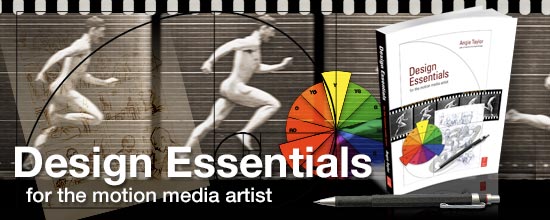
 Did you know tat you can read the first chapter of my “Design Essentials for the Motion Media Artist” free on Amazon Kindle?
Did you know tat you can read the first chapter of my “Design Essentials for the Motion Media Artist” free on Amazon Kindle?
Just click here and then follow the link on the right hand side of the page under “Kindle”.
Here are some Inspirational motion graphic designs I include in my seminars on “Typography and Dynamic Text animation”. These are inspirational examples of opening title sequences that I have been inspired by throughout the years.
Big thanks especially to the “Art of the Title” website for providing such lovely, high-quality clips for us all to enjoy. They also have some great articles on the inspiration and processes used to create some of these stunning pieces of work. Enjoy!
Anemic Cinema – Marcel Duchamp & Man Ray
Saul Bass:
Man with the Golden Arm
Anatomy of a Murder
It’s a Mad, Mad, Mad, Mad World
Ocean’s Eleven
The Facts of Life
Pablo Ferro:
Dr. Strangelove
Midnight Cowboy
The Thomas Crown Affair
Kuntzel and Deygas – Catch me if you Can
De Patie – Freleng – The Pink Panther
Kurtz & Friends – The Pink Panther
Arcady & Maurice Binder – Barbarella
Maurice Binder – Dr. No
Daniel Kleinman – Casino Royale
Saul Bass – North by Northwest
David Fincher – Panic Room
Kyle Cooper – Seven
Danny Yount:
Six Feet Under
Iron Man
Sherlock Holmes
Eric Anderson – Dexter
Matt Mulder & Rama Allen – True Blood
Jamie Caliri – Lemony Snickett
Karin Fong & Steve Fuller – the Mummy Tomb of the Dragon Emporer
Jorge Calvo – Buried
Moises Arancibia – Elektra Luxx
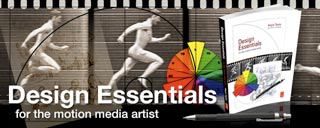
Design Essentials for the Motion Media Artist – who is this book for?
This book was written for people I meet at trade shows and seminars who say “I’ve learned the software but my designs still look terrible. What am I doing wrong?”
This book is also for you if you’re a student or are new to motion graphic design. While teaching design students I found it frustrating recommending ten books to each student to cover the basic design principles for the foundation year of their degree course in Graphic Design. The university library never had enough books. The students couldn’t afford to buy the books they needed. Ironically, they only really needed one chapter from each to provide what they needed to get started. If only all that information could be provided in one book!
What will it teach me?
The book is designed as a one-stop, getting-started guide for anyone new to motion graphic design who wants to get the basic principles under their belt so they can get started quickly, making better design decisions as they work through the chapters.
After reading this book you’ll feel comfortable with the basic concepts and principles of design, animation and editing. There’s a chapter on drawing that teaches you the importance of “learning to see” through fun drawing exercises. Among other things, you’ll learn how to choose color combinations that work and how to create convincing and compelling movement in your animations. It will also help you choose fonts that work and improve composition with balance and elegance.
Inspiration
At the end of each chapter, a well-respected creative professional will talk about how their work incorporates some of the principles taught in the book. This helps you see the importance of these principles and to understand how they eventually become second nature to artists and designers.
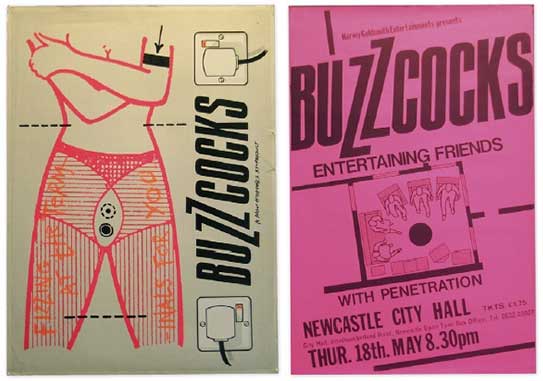
Record Sleeve designs for Buzzcocks by Malcolm Garret
Learn from some of the top people in their respective industries. The book includes “Inspiration” sections written by graphic designer and creative director Malcolm Garrett and musician Joan Armatrading amongst others. The Foreword to the book is written by commercial director and photographer, Rob Chiu (AKA The Ronin).

Where will it take me?
“Design Essentials” confidently points you in the right direction on the road to becoming a better designer and animator. The book presents the principles of design in an engaging and inspiring way. Each principle is explained in plain English with illustration, and photography where necessary. As well as mastering the fundamental concepts and principles of motion graphic design, with my creative approach to teaching, you’ll learn how to manipulate and bend the rules to create something unique that will also achieve your communication goals.
Once you’ve finished reading this book you should have the confidence to implement what you’ve learned to your motion graphics projects. There’s also an extensive Recommended Reading List on this website that will help you decide where to go next so you can increase your knowledge of these basic principles even further. There’s also a page featuring links to all the external resources mentioned within the pages of my book.
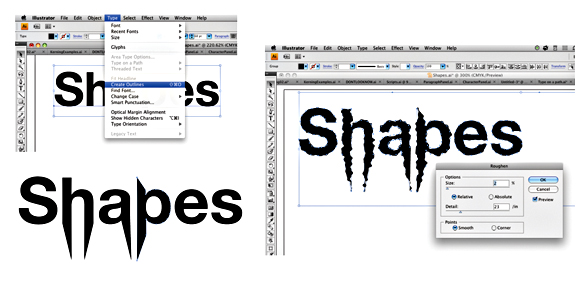
– a typography video-training workshop on the principles of designing text.
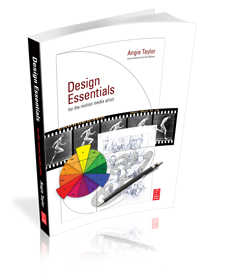 I’ve just finished recording my latest workshop with the fantastic team at video2brain. It’s a workshop with a difference.
I’ve just finished recording my latest workshop with the fantastic team at video2brain. It’s a workshop with a difference.
If you want the salient points delivered to you quickly so you can get on with your work, this product is perfect for you. It’s a series of short videos that form an educational and enjoyable workshop that you can sit back and enjoy – imbibing my knowledge as you go!
It’s based upon the Typography chapter from my book, Design Essentials for the Motion Media Artist. Not everyone likes to read books or needs the level of detail covered in Design Essentials so this provides an alternative.
It provides a quick-reference guide in the format of a video presentation. All the essential key principles of Typography that every designer needs are covered. And it won’t bog you down with too much detail (that’s what the book is for right?) it’s fast-paced and illustrated throughout with helpful animated diagrams and examples of work.
Learn about the history and anatomy of type as well as the terminology used to describe the components of text. Discover the difference between typefaces and fonts, glyphs and characters, serifs and sans serifs, kerning and tracking, leading and baseline shift. Find out when and why you would use specific fonts based on aesthetics, cultural associations and characteristics.
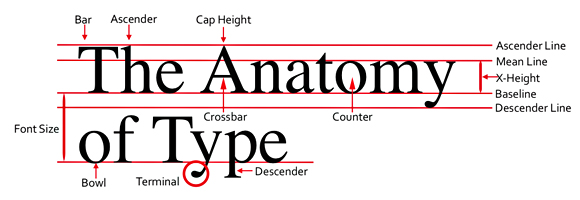
This workshop expands on the content of the book with additional software exercises to improve your typographic software skills. You’ll learn how to apply the principles of typography in practical ways to graphic design projects. Software exercises will show you how Adobe’s Character and Paragraph panels can help make the most of your text, creating unique and exciting effects.

I’ll also teach you lots of neat tricks like animating text along paths in After Effects and making text write on the screen. In Illustrator we’ll use operators to customize lettering, giving it a hand drawn look,. We’ll create 3D Text in Photoshop and add Layer Styles to brighten up our graphic designs. In InDesign you’ll make the most of its powerful Open Type features such as ligatures, glyphs and other special characters.
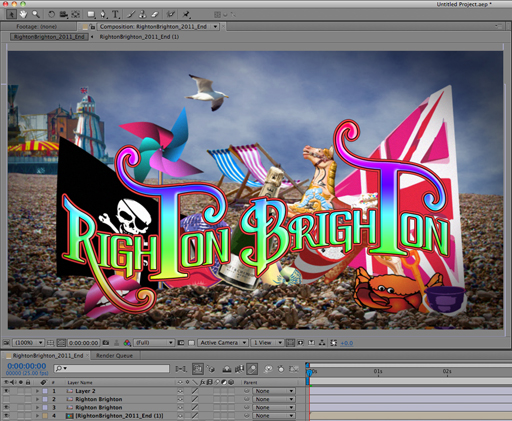
With this comprehensive typography video training workshop you can simply sit back and watch as I present the principles for you. If you feel like following along, all the exercise files are provided. The videos are short and easily digested and you won’t get bogged down with technical jargon as I explain difficult concepts using easy-to-understand, real-world terminology.
If you’d like to be notifies when this title becomes available please click on this link.
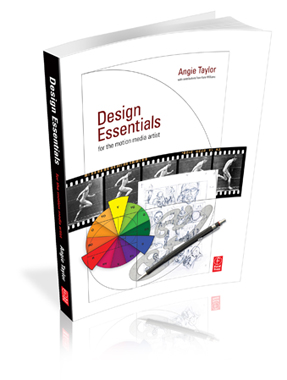
Digital Arts has featured – 12 Rules of Animation – an excerpt from my “Design Essentials for the Motion Media Artist” as their feature article this month. The article is now FREELY AVAILABLE on the Digital Arts website.
Animation as we know it has been around since Horner invented the zoetrope in 1834. Since then animators have developed rules of animation that help us to draw viewers into the world we have created. From Disney classics to the latest stereoscopic 3D productions, we’ve plundered them all to find the 12 key techniques you need to master to be a top-flight animator.
Some of these rules are based on real-life physics, and others on observations and reactions. They provide a set of invaluable ‘tricks’ for animators that have been proven to work in almost every situation.
In the article I delve into the world of animation to pick out the 12 rules of animation that every animator and motion graphics artist must know. Drawn from the forms 150 year history, you’ll learn a wealth of dos and don’ts that will help you produce more engaging projects, whether you’re working in 2D, 3D, graphics, stop-motion or a mixture of them all.
You can pick up both printed copies and digital downloads from the Digital Arts website where you can also find some of my tutorials, tips and tricks.
I’ll also be talking about some of these golden rules of animation in my “Dynamic Text Animation for Motion Graphicswith After Effects” presentation at the Production Fiesta in London on May 6th.
In this session, I will share an in-depth look at the options for working with text in Adobe After Effects. I’ll show examples of successful motion graphic designs and will discuss the components of design that make them work. In this session you’ll earn about the rules of typography and how to apply the rules of typography to your designs to make them easier to read and more dynamic. I’ll also take an in-depth look at the typographic controls available in After Effects and will also show you how you can use hand-drawn text to bring a unique aspect to your designs.
I’ll also be presenting four other sessions at this event which you can find out about here. If you want to register for a full day of valuable creative sessions by me and all the other speakers you can do so here on the Eventbrite page. I hope to see some of you there, please make sure to say hello if you can make it along.

 Did you know tat you can read the first chapter of my “Design Essentials for the Motion Media Artist” free on Amazon Kindle?
Did you know tat you can read the first chapter of my “Design Essentials for the Motion Media Artist” free on Amazon Kindle?














